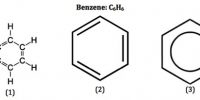Methanol-gasoline fuels do exist, but there is not the same degree of use as there is with ethanol-gasoline fuels. This is not difficult to understand. The raison d’etre of ethanol-gasoline fuels is that the ethanol component is carbon neutral. Methanol is usually made from coal or natural gas via synthesis gas, in which case it is not carbon neutral.
The ethanol-gasoline blend of lowest ethanol content is El 0, which is 10% ethanol balance gasoline. Its viscosity amongst other properties is discussed in a recent paper by Kiatkittipong et al. These workers compared a commercial El 0 ‘gasohol’ with FCC gasoline and with the same FCC gasoline blended with alcohol. The kinematic viscosities at room temperature were respectively 0.89 cSt, 0.67 cSt and 0.84 cSt. These are all in the range given above for `gasolines’ generically. There are Flexi Fuel Vehicles (FFV) which can use any fuel in the composition range from neat gasoline to E85. Clearly, the viscosity variation between the fuels across the range of gasoline-ethanol proportions is not a difficulty in operation. (The first E85 forecourt dispenser in the UK came into service at the time this chapter was being written.)
Note that although the simplified form of the Grunberg-Nissan equation used in the previous chapter for crude oils would be suitable for application to the blending of straight-run gasoline and reformed naphtha it would not be suitable for gasoline-ethanol blends. This is because for gasoline and ethanol the approximation γ12 = 0 would not hold.













